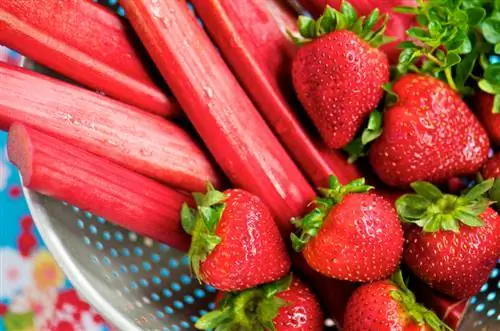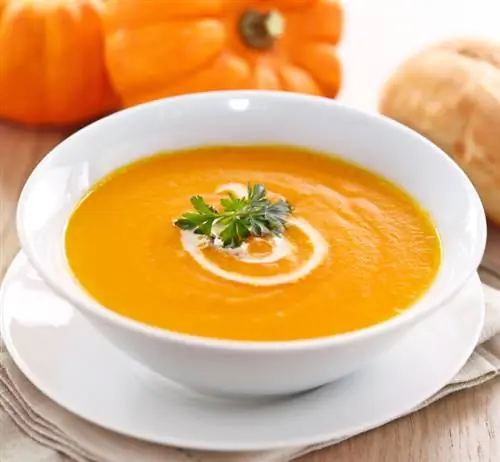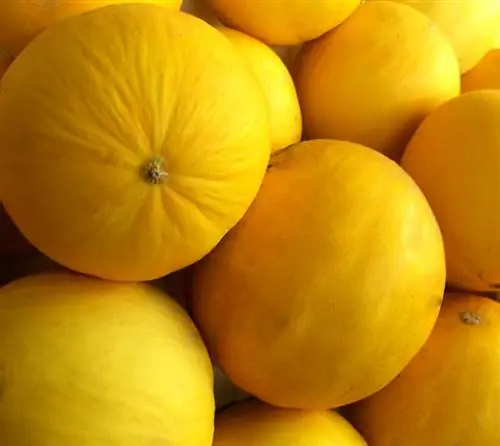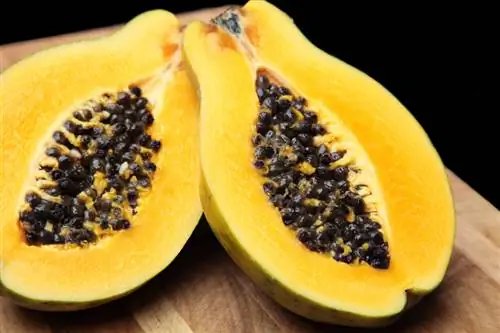- Author admin [email protected].
- Public 2023-12-16 16:46.
- Last modified 2025-01-23 11:19.
When the rhubarb season begins in April at the latest, the question will be raised again. Supporters of the fruity, sour garden plant engage in passionate debates about whether rhubarb is a fruit or a vegetable. The answer is astonishing to many hobby gardeners.
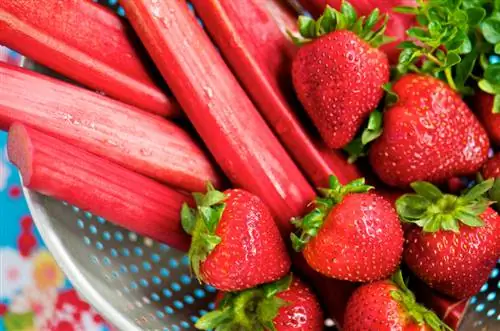
Is rhubarb a fruit or vegetable?
Is rhubarb fruit or vegetable? Although often used like fruit, rhubarb is botanically a vegetable because it does not produce fruit but rather stems that are processed. This is similar to other stem vegetables such as celery or asparagus.
For botanists there is no doubt
If the answer follows the definitions for fruits and vegetables to the letter, there is no doubt: rhubarb is a vegetable. However, retailers are not bothered by this and always sort rhubarb in the fruit shelf.
In addition, the use of rhubarb suggests that it is a fruit. During preparation, the red or green stems are transformed into refreshing compote, fruity jam, invigorating juice and tempting cakes.
Of course, the type of processing puts rhubarb in the vegetable category. It's not the fruit, but the sticks that are processed. When it comes to other stem vegetables, such as celery or asparagus, no one frowns when asked whether they are fruit or vegetables.
The main thing is he althy and tasty
When hobby gardeners plant rhubarb, they certainly have no botanical subtleties in mind. Rather, they strive to cultivate a perennial perennial with a variety of he althy attributes:
- rich in vitamin C, potassium and calcium
- only 12 calories per 100 grams
- strengthens our immune system against free radicals
- provides a whopping 3.2 grams of fiber per 100 grams
Only the oxalic acid content can cause problems for sensitive people. If you avoid consumption after the end of the rhubarb season on June 24th, there are no concerns. In any case, oxalic acid is only contained in higher concentrations in the inedible leaves.
A vegetable with high ornamental value
Once the question of fruit or vegetables has been clarified, rhubarb actually becomes even more fascinating. When it comes to varieties like Siberian ornamental rhubarb, there is probably no vegetable that can compete with it in terms of attractiveness.
Tips & Tricks
If you want to be on the safe side when it comes to oxalic acid, simply use the following trick. Add 0.3 grams of carbonated lime to the cooking water for every 100 grams of rhubarb. The acid is bound in this way and poured off along with the water.

